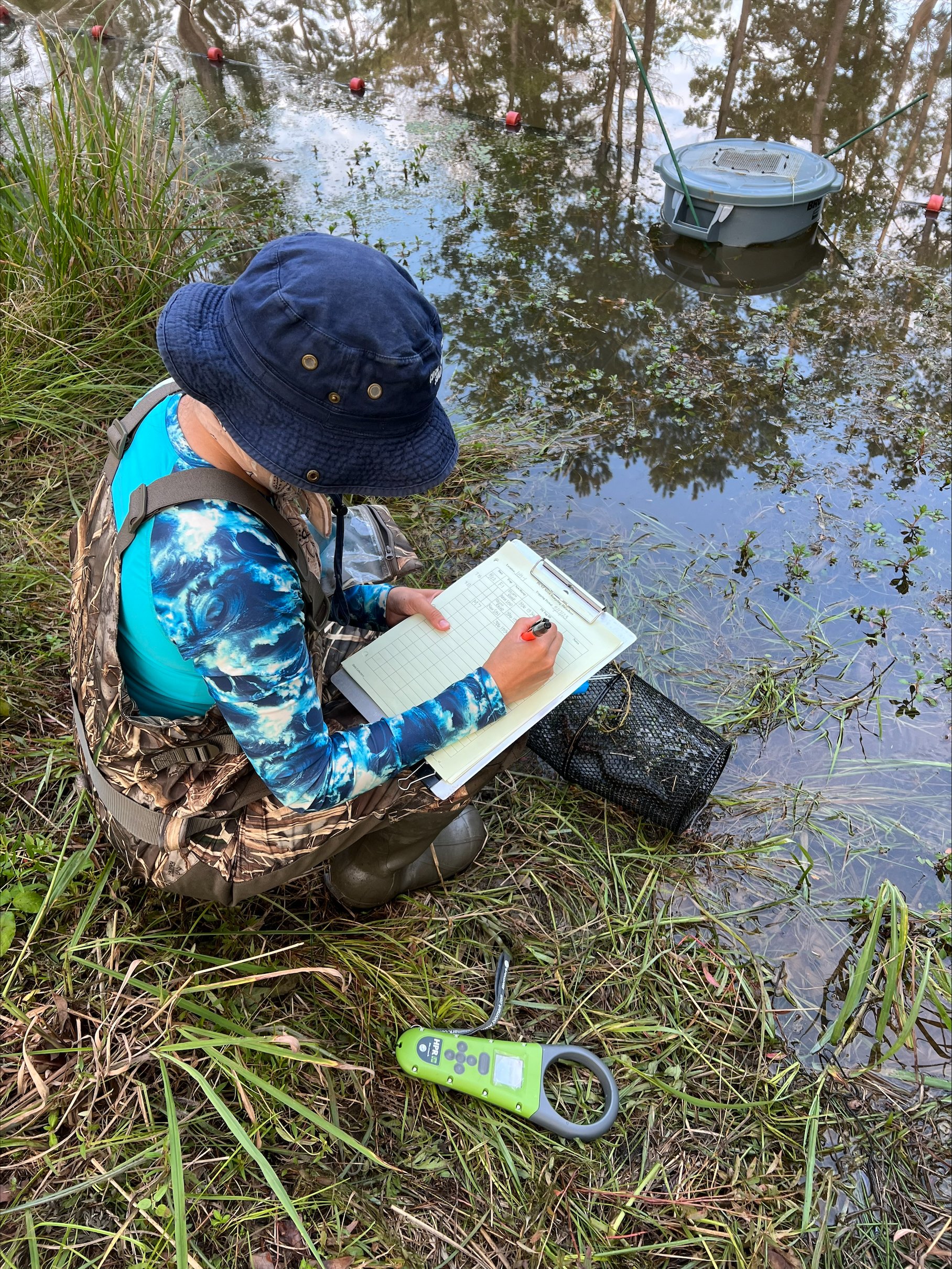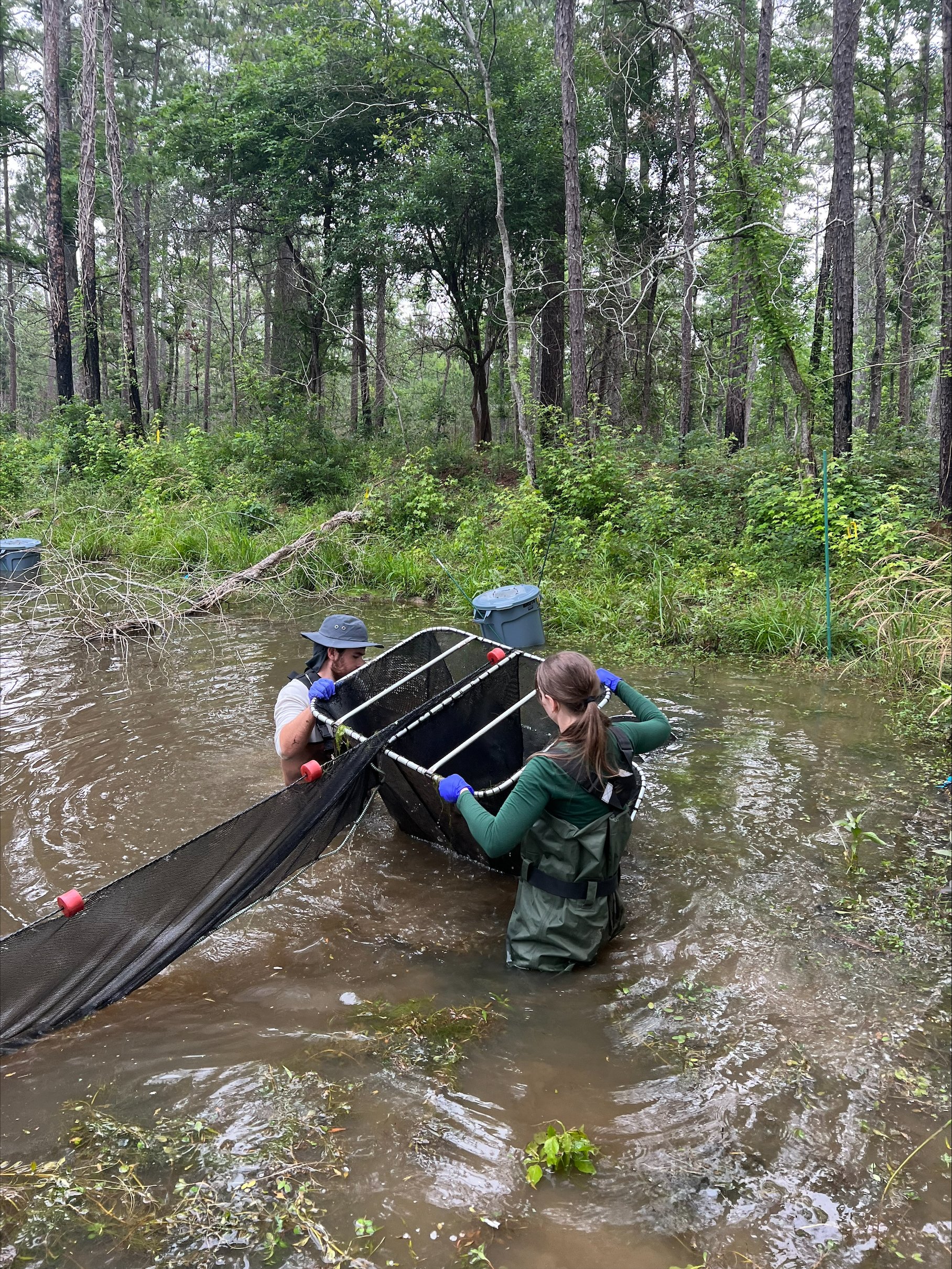Integrating individual-level juvenile welfare in dynamic habitats across time and space
Grantee: Tom Luhring
Institutions: Wichita State University, Texas State University, and Stephen F. Austin University, United States
Grant amount: $162,604
Grant type: Challenge grants
Focal species: Sirens (Siren intermedia)
Conservation status: Least concern
Disciplines: Herpetology, physiology, climate science
Research location: United States
Project summary
The project will track individual juvenile lesser sirens (Siren intermedia) within and across years for four populations in Eastern Texas. The lack of a terrestrial life-stage and severely limited overland dispersal ability means that hydrologically isolated pools function as closed populations, facilitating recaptures and simplifying demographic estimates. Siren health is directly impacted by the effects of the environment (e.g., drought conditions) through the impacts of resource availability on body condition and growth rates. Furthermore, sirens show strong size-dependent and seasonal shifts in antagonistic behaviors such as biting which lead to acute injuries.
Aquatic amphibians are especially well-suited for the collection of water-borne stress hormones (corticosterone), which offer the least invasive method of evaluating an integrated measure of corticosterone levels that are passively being released through the skin, gills, feces, and urine. This project will use water-borne corticosterone release rates to investigate changes in stress physiology as a function of changes in the environment experienced by the individual (population density, drought severity index, water temperature, pH, conductivity) across time and space to understand coping capacity. These data will also be used to investigate the welfare impact of an established marking technique compared to a novel approach based on pattern recognition by a machine-learning algorithm.
Why we funded this project
Juvenile mortality is especially high in amphibians, and amphibian welfare in general is a neglected subject. This project should provide proof of concept for a cost-effective approach for assessing welfare at both an individual and population level. The waterborne measurements have the potential to integrate corticosterone over a longer period of time, increasing its reliability as a welfare indicator. Finally, this project will test a novel, non-invasive approach to mark-recapture studies, which could facilitate much better individual-level welfare research for amphibians and other (especially aquatic) animals in the future.





